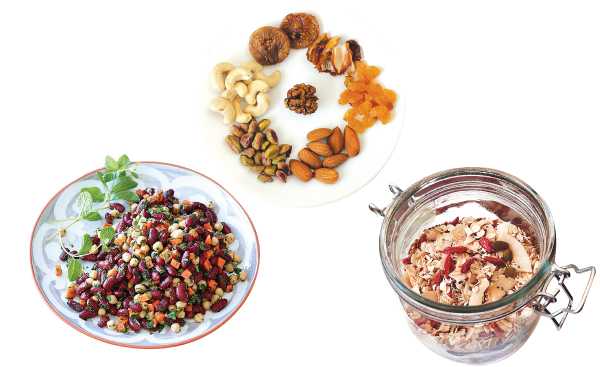EAT YOUR WAY TO A FLATTER STOMACH

Shedding midriff fat, also known as visceral fat, is a daunting task almost every woman faces, particularly after menopause. We give you tips that can help you shed this health-threatening fat from around your stomach through diet.
There are very few women who are content with their stomachs, particularly the older woman. While everything around their bodies may be just perfect, that belly pot leaves them feeling not quite elegant. It is true that getting older and wiser can make you more accepting of your body, but nobody can get used to a popping out stomach all the time. It is a cruel fact that a woman’s middle tends to broaden as the years go by. Higher oestrogen levels tend to favour fat deposition around your hips and thighs when you are younger, but as you age, there tends to be a redistribution towards your midriff.
Midriff fat is not only unsightly, but it is also a health risk. Visceral fat covers major body organs and exposes you to higher risk of lifestyle diseases such as high blood pressure, diabetes, heart attack and stroke. It may also increase your risk of certain cancers. Fortunately, you can tackle a wayward tummy and get it into shape through diet.
If you have lots of excess fat in this tummy area, no amount of sit-ups is going to reveal the toned abdominal beneath, so don’t waste your time if you are not going to make diet part of your weaponry. Difficult as it may seem, watching the calories you eat every day is the first and most fundamental thing you can do to get a trimmer tummy. That said, the quality of your diet and how you spread your meals can make a big difference, too.
Eat little and often
How you spread your meals can make a big difference to your waistline. Try to keep your meals small and regular. Have at least six small meals a day instead of the traditional big three (breakfast, lunch and dinner). A big meal sitting in the stomach will produce a pot-bellied look even in the slimmest person and can be extremely uncomfortable, too. It also overloads your digestive system making you sluggish.
Eating little and often will not overtax your digestive system, and is less likely to result in a popping out tummy, which is unflattering in any dress.
The first foods to avoid if you want a flat tummy are the bloating foods, which include cabbage, beans, asparagus and spices. If you eat consciously, you will have an idea of foods that are the worst culprits for producing an instant beach ball tummy, and so you avoid them. But not all beans produce gas – baked beans, for example, are excellent as they are lower in raffinose, the sugar that causes wind.
Get in balance
An imbalance of good and bad bacteria in the gut can also cause bloating, so top up with a healthy probiotic yoghurt or drink. You could also take a probiotic supplement. Take a little care at first, though, as sometimes probiotics can unsettle your digestion, albeit, temporarily.
Perhaps the most fascinating link between diet and waistline is the potential for a diet high in fast-releasing (high GI) carbohydrates, such as white bread, sugar, cakes, potatoes and white rice, to cause a fatter and wider middle. High-GI carbohydrates cause a faster release of insulin, the blood glucose- regulating hormone, which, in turn, is linked with higher levels of fat storage in your abdominal area.
If you have been overdoing refined carbohydrates, swap to smaller portions of slower-releasing, low GI types, such as porridge (oats, wimbi and other wholegrain), grainy bread, brown rice and whole-wheat pasta. Swapping some of your carbohydrates for monounsaturated fats (MUFAs) will also help. Snack on unsalted nuts and raw seeds instead of crisps and pretzels, and use an avocado and olive oil spread rather than jam, margarine or butter. One study published in the journal Diabetes Care found that a MUFA-rich diet prevented fat making a beeline for the stomach and improved sensitivity to insulin in pre-diabetic subjects.
Other great flat-tummy friendly foods are potassium-rich fruits and vegetables, in particular bananas, beetroot and a daily glass of orange juice. Potassium works its magic by counteracting the water-retaining effects of excess sodium in the body. But you will also need to cut down on salty foods to maximise the stomach-flattening impact.
Finally, cut back on alcohol if you want to have a flat tummy. And the greatest advice remains one you have heard many times – never drink on an empty stomach. This is so true for those who desire a flatter stomach as alcohol is very high on calories and gets absorbed more easily when your stomach is empty, so you tend to drink more. Go for spritzers or other lower-alcohol drinks to help keep your stomach trim. Generally, cutting down on alcohol, particularly beer and wine, will do wonders to your waistline.
Published June 2016




